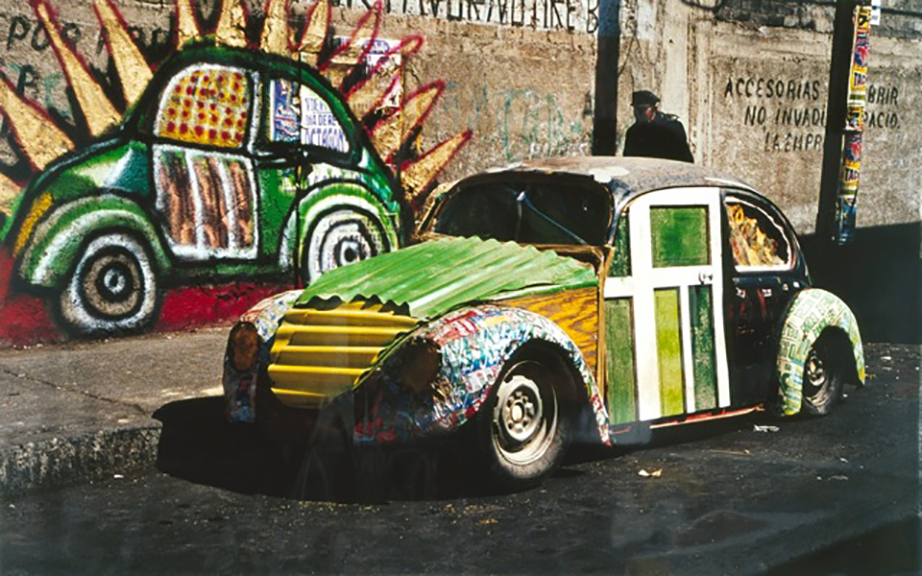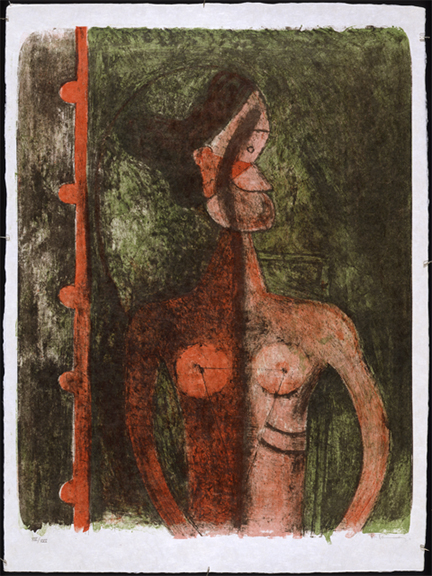Heading to Rio by the sea-o for the Summer Games only from the comfort of your couch? Then why not explore Latin America through a new show at Purchase College’s Neuberger Museum of Art as well?
“Destination: Latin America” (through Jan. 22) illustrates the museum’s important collection of Latin American art and discusses the key historical and artistic movements that influenced that art.
“It is a true journey through the art of 20th- and 21st-century Latin American Art,” notes Patrice Giasson, the Alex Gordon associate curator of art of the Americas, who organized the show with curatorial assistance from Marianelly Neumann and research assistance from Annabel Rhodeen and Carmelita Diaz.
The exhibit considers work created by artists affiliated with the artistic revolution that emerged after the Mexican Revolution of 1910 to ’20; sculpture and painting by key South American artists after World War II that explored color, form, space and motion; work by Caribbean and South American artists inspired by African art, Surrealism and Magical Realism; the challenges faced by artists living under the dictatorships of the 1960s, ’70s, and ’80s; and contemporary artists addressing globalization, violence and social criticism.
The exhibit includes more than 70 works by Manuel Álvarez Bravo, Raúl Anguiano, Julio Antonio, Henry Bermudez, Leda Catunda, Carlos Cruz-Diez, José Luis Cuevas, Arturo Duclos, Lucio Fontana, Carlos Garaicoa, Florencio Gelabert, Alfred Jensen, Nicolás de Jesús, Wifredo Lam, Eduardo Mac Entyre, Teresa Margolles, María Martínez-Cañas, Roberto Matta, Almir Mavignier, José Clemente Orozco, Marta María Perez Bravo, Betsabeé Romero, Jesús Rafael Soto, Gerardo Suter, Rufino Tamayo, Luis Tomasello and Eugenia Vargas.
The focus of the first section, the aftermath of the Mexican Revolution of 1910 to ’20, shows how that country’s political revolution triggered changes in all modes of creation, including painting, photography, theater and literature. The young artists of the Mexican mural movement, led in part by José Clemente Orozco, were central to this. As art took to the streets, native Mexicans, common people, workers, peasants and children became the artists’ subjects. Mexican muralists gained international recognition and, for many, Mexico City became the “Paris of Latin America.” International artists engaged with Mexican artists, and several Mexican artists were invited to create works in the United States, Europe and Russia.
In the second half of the 20th century, Latin America’s interest in abstraction and a newfound enthusiasm for contemporary European artistic trends grew. The end of World War II opened new artistic frontiers for a generation of Latin American artists eager to move away from representational traditions. This advance was reinforced by economic prosperity, leading to the development and modernization of large cities and a boom in the construction industry. Adopted by Latin American artists living abroad, and by European artists traveling to South America, Geometric Abstraction, Concrete Art and Kinetic and Optical Art laid the groundwork for new means of artistic expression. The effect of these movements on the art of Latin America remains visible today.
It is, however, impossible to speak of Latin American art without acknowledging the contributions of African-American culture and the influence of African art. In such countries as Brazil, Colombia, Cuba, Haiti and Venezuela, where the African-American presence is pervasive, African traditions and religious beliefs coexist and intermingle with indigenous and Western practices, shaping, in some countries, a Creole identity.
From the 1960s into the ’80s, political turbulence had a tremendous effect on artistic life. During these years, most South American countries lived under the shadow of military regimes and dictatorship, along with the violence and repression they spawned. It was the peak of the Cold War, and a campaign of political repression designed to eliminate left-wing activists was carried out (with the support of the United States). Artists came under suspicion of the authorities and civil war broke out, with the turbulence affecting artistic life. To avoid persecution, artists practiced self-imposed censorship and developed various strategies, such as creating conceptual works that expressed their opposition to authority through allusion. These new art forms also challenged the conservative tendencies that dominated certain art schools. Censorship and fear prevented the kinds of collaboration that usually occur among artists. Yet artistic output progressed, as many multimedia artists explored questions of identity and memory.
Many of the concerns that Latin American artists address today – identity, sexuality, political struggle, consumption, pollution, violence, police brutality, repression and the onset of a deteriorating environment – appear in creative output worldwide, as we live in an era when individuals travel freely and live in multiple locations, often outside their native countries.
“Many Latin American artists prefer not to carry a national banner,” Giasson says, “but instead consider themselves actors engaged in a universal dialogue.”
Support for “Destination: Latin America” has been provided by the Friends of the Neuberger Museum of Art and the Purchase College Foundation.
There are gallery talks slated for the fall season, on Oct. 5 and Dec. 7. The museum is at 735 Anderson Hill Road between Purchase and King streets.
For more, call 914-251-6100 or visit neuberger.org. – edited by Georgette Gouveia


